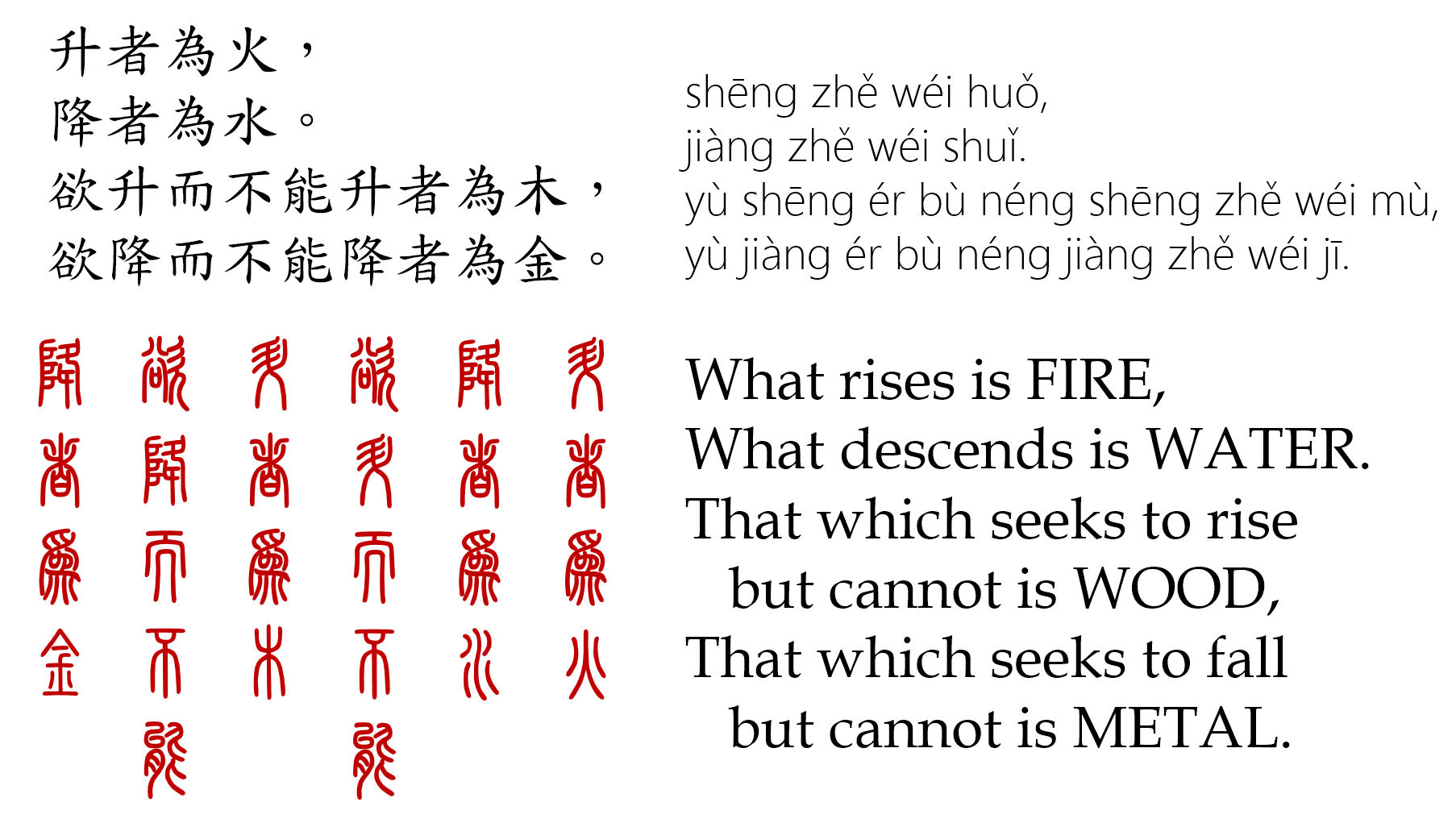
often known as the Wen Shi Zhen Jing: Sutra of Magical Spells and Aphorisms for Attaining Primordial Reality
The extra acknowledged naming conference for the sutra is the Guan Yinzi (闕尹子) or Wen Shi Zhen Jing (文始真經) attributed to the gatekeeper who Laozi encountered.

The Guan Yinzi (or Wen Shi Zhen Jing)
Based on lore, the gatekeeper on the Western Go, named Yinxi 尹喜, later given the title Wenshi (文始), transcribed the teachings of Laozi and that textual content grew to become the Tao Te Ching (道德經). Alternate tellings have Laozi writing the teachings down into two books himself, which the gatekeeper then receives.

After receiving Laozi’s teachings, the gatekeeper attains enlightenment and subsequently writes his personal e book, which turns into generally known as the Guan Yinzi 闕尹子. Guan 闕 means gatekeeper. Yinzi 尹子 means “Grasp Yin” (like how Laozi means “Grasp Lao”), an honorific that Yinxi 尹喜 is given upon mastering the Tao.
Traditionally amongst Taoist alchemists, mystics, and ceremonial magicians, the Guan Yinzi handled as a e book of magical spells and highly effective cultivation practices hidden in plain sight. It’s a nine-chapter esoteric Taoist sutra and canonized sacred textual content attributed to the Three Sovereigns (三皇, San Huang) custom of Taoist ritual magic. It additionally grew to become the principal textual content for a mystical Taoist lineage named after the gatekeeper, the Wenshi College (文始派).
The 9 chapters are titled as follows:
- 一宇 One Universe
- 二柱 Two Pillars
- 三極 Three Thrones
- 四符 4 Talismans (or Seals)
- 五鑑 5 Patterns (or Formulation/Rubrics)
- 六匕 Six Daggers
- 七釜 Seven Cauldrons
- 八籌 Eight Manifestations
- 九藥 9 Medicines / 9 Poisons
The origins of the textual content is attributed to the time of Laozi, round sixth century BC, although the oldest documented reference now we have to it’s circa 400 BC within the Liezi 列子, a classical textual content on Taoist philosophy. Round 400 AD, the textual content is canonized within the Daozang 道藏 (Taoist Canons).

Seminal Textual content within the Three Sovereigns Magical Custom
The Three Sovereigns custom is finest recognized for its volumes of talismans and directions on Fu talisman crafting, cultivation practices of inside alchemy, and coded outer alchemical recipes for magical elixirs. Inextricable from the Three Sovereigns custom of sigil magic are its grimoires on summoning spirits and demons.
Three Sovereigns (三皇) is taken into account a northern magical clan-specific custom that migrated south with aristocratic refugees from fallen imperial courts. Within the south, it syncretized with native folks non secular and wu shamanic practices.
Over the millennia many offshoot lineages sprung from the Three Sovereigns, typically household and clan-based. The assumption was that entry to the custom’s established pillars of magical energy needed to be inherited or by way of merited switch of qi from lineaged grasp to worthy pupil.
Occult Beliefs Across the Guan Yinzi
It’s lengthy been held amongst Taoist alchemists, occultists, and mystics that the Guan Yinzi is written in code, or riddles. The chapter titles trace on the arcane data you might be to obtain from that respective chapter textual content, however then the chapter textual content itself is much from being instantly understandable.

A surface-level textual studying offers you proverbs and axioms that on its face, include normal knowledge, not not like the Tao Te Ching.
The excerpt from the 9 Elixirs chapter (maintaining it impartial; you possibly can lean towards deciphering it as both Medicines or Poisons) is about not blaming the Tao for being tough merely since you don’t perceive it, however moderately, be content material with what elements of it you can perceive; likewise, don’t extol the Tao’s profundity in a approach that self-congratulates your superiority, however moderately, be content material that the Tao’s profundity empowers you to own a honest affinity for all sentient beings.
Now check out the pathways shaped by that line textual content. The pathways reveal a 5 by 5 (5 strains, every consisting of 5 ideograms) sample, which is a reference again to the chapter 5 Patterns.
Right here’s one other instance of “learn” the Sutra:

The sentence construction of Chapter 4: 4 Talismans is repetitive with its references to 2 pairings, Fireplace-Water and Wooden-Steel, which have been introduced earlier in Chapter 2: Two Pillars. If you take aside the Chapter 4 textual content and rearrange the passages into groupings by Water, Steel, Fireplace, and Wooden, you find yourself with directions on craft 4 talismans.

A deep-dive of the textual content is required to retrieve the textual content’s occulted which means. Formulation, step-by-step directions, and extra detailed perception of the arcane teachings should be retrieved by fixing the riddles or treating the road textual content as a labyrinth and routing a path by way of the maze of phrases.
The Six Daggers chapter might counsel soul migration and astral flight, offering a coded glossary of symbols and omens. It additionally references two states of consciousness and having to discern which state is the “dream” state and which is “actuality.” The Daggers chapter is to be studied in tandem with the following Seven Cauldrons chapter, i.e., interaction and mergers between the yang attribute of daggers and the yin attribute of cauldrons.
As for the ultimate Chapter 9, 9 Medicines or 9 Poisons, relying on the way you interpret the context across the phrase yao 藥, for many who handle to “crack the code” of this Sutra, you possibly can both use its secret teachings to grasp the 9 Medicines and grow to be a strong healer or you need to use the key teachings to grasp the 9 Poisons and grow to be a strong destroyer.
English Translation and Annotations
My bucket listing of non-public initiatives is getting longer and longer… A private challenge I’ve began is translating and annotating each the Tao Te Ching and the Wen Shi Zhen Jing, the 2 texts introduced collectively. “With what time?!” is the urgent query. Sigh.
Trending Merchandise










